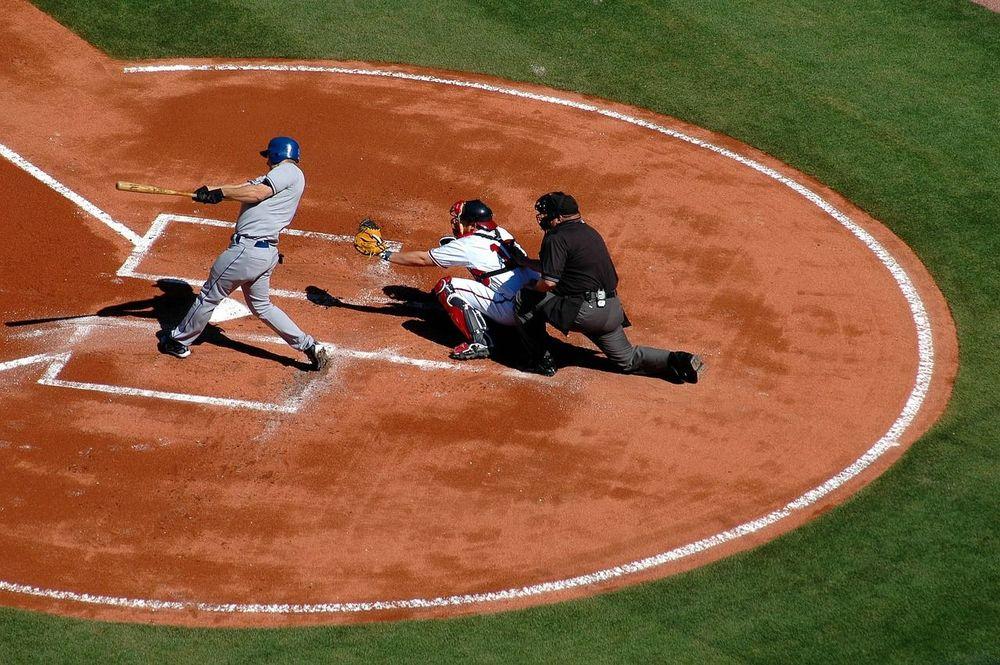
The BTV Podcast, Episode 38: Yanking Our Chains
Welcome back to the Baseball Trade Values Podcast! In this episode, founder John Bitzer (@johnbitzer2) and Associate Editor Joshua Iversen (@jive_mlb) discuss the 2021 playoffs and front office movement. Then, they break down more laughable trade proposals and take a closer look at the Yankees dilemma. Listen to the episode through your favorite podcast provider, or via the media player or download link below: Download link: http://cast.rocks/hosting/22512/Baseball-Trade-Values-Episode-38-Yanking-Our-Chains.mp3 Links: Bowden - The Yankees need major change ($) https://theathletic.com/2875786/2021/10/14/the-yankees-need-major-change-here-are-5-offseason-moves-that-could-aim-them-in-the-right-direction/
About the Author
Comments
2I posted this under a trade proposal, but it probably makes more sense here. I strongly disagree with a podcast comment by John (I think). John said, “let’s pat ourselves on the back for the Craig Kimbrel trade… We are looking like we were right.” I couldn’t disagree more. Your posted trade values take into account more than just player value (i.e., WAR and salary); they also account for likelihood of availability, 40-man roster crunch considerations, etc. Kimbrel was a highly desired commodity at the deadline, so his trade value would be higher than his pure WAR player value. Teams are willing to spend more on a 1-WAR closer at the deadline than a 1-WAR outfielder if both have equal salaries. We’ve seen this numerous times at the trade deadline over the past several years (Kimbrel netted more than Bryant, for example). Since your model accounts for more than just WAR and salary, it is not right to conclude that you were right that Kimbrel had essentially no surplus trade value. He may not have had any surplus player value (yes, he turned into a pumpkin and he was already expensive) but there was high demand for him at the deadline. Your model is supposed to do a good job at predicting whether certain proposals would be accepted or rejected and the model failed with regards to the Kimbrel trade. I suspect there are two possible issues with the model with regards to closer trade value near the trade deadline. First, Kimbrel had essentially no surplus trade value (even, negative—LOL—at the beginning of July). I assume this is because his projected WAR from early July to October (maybe around 1.0-1.5 WAR) was in line with his remaining salary (maybe around $10-12 million). The issue with this analysis is that you can’t go on the free agent market and sign an elite closer in July for $10M. His trade value will be higher than his (WAR) player value since there is a small supply of high-end closers and there are none that can be signed as free agents mid-season. Additionally, teams seem to spend more in prospect capital at the deadline for a closer than a position player, even if they have similar projected WARs. For me, there was cognitive dissonance between BBTV saying Kimbrel had negative surplus trade value in early July (and very minimal positive surplus trade value in late July) and reports that he was one of the desirable assets that was expected to be moved at the deadline. In the end, the BBTV model didn’t predict that the actual Kimbrel trade would be accepted and the baseball writers were right that Kimbrel was so highly desired that his trade value was far above zero. I would guess that there needs to be more (positive) weight towards elite closers at the deadline, as they seem to follow a different model. I really enjoy this website and think it does an amazing job at predicting whether potential trade offers would be accepted based on only a few factors. Honestly, at times, I am obsessed with trying different trade possibilities. I worry that you’re taking the wrong lesson from the Kimbrel trade. The lesson was not that you were right, as your model did not predict correctly. The lesson was that trade value for elite closers at the deadline may not follow the same relationship as position players.




Thank you for the feedback. You make some great points, and we always appreciate critiques. And you're right that, because Kimbrel stood out from the pack as an elite closer at the time, and because trading is the only option for team improvement during the season, demand for his services should well exceed supply, and cause his value to go up. I agree. I do think there's something to that. However, we had already skewed his numbers higher for that reason, and the overpay was still extreme. So yes, there's a lesson there. But my point was also that the $/WAR relationship is still foundational, because you then have to deal with the circumstances post-deadline, which the Sox now are facing. And since models tend to follow a bell curve, you can't let one outlier change the whole thing. I just thought it was interesting that in Kimbrel's case, even he is reverting to the mean. And rationally, the Sox should have factored that in more than they did. But c'est la vie. Again, thanks for the very thoughtful feedback.